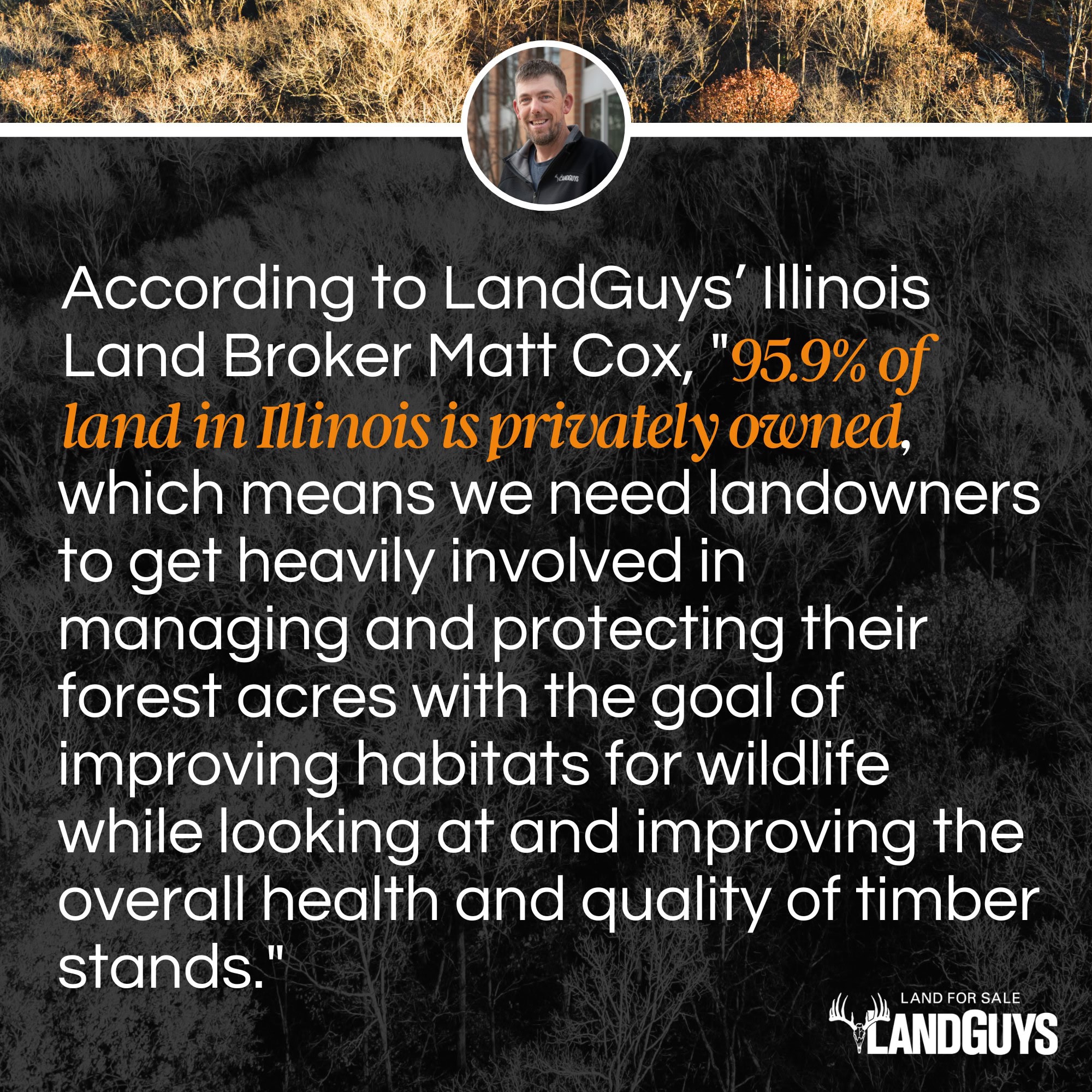Written by: Matt Cox, LandGuys Illinois Land Broker
If you are a deer hunter in Illinois and on social media, you have probably seen a video about Timber Stand Improvement (TSI). These videos pop up in my “feed” often, and it’s usually in the form of someone explaining how they are “hinge cutting” or clearing a selected area on a farm to increase and promote deer to “bed” in that area.
Some videos I’ve watched are intriguing and informative, while others are difficult to endure due to the misleading information they contain. Only a few videos acknowledge the crucial need to address invasive species before embarking on extensive logging and Timber Stand Improvement (TSI) efforts. I came across an article by Bill Winke titled “Fundamentals of Timber Stand Improvement,” where he recounts his personal experience and emphasizes the importance of prioritizing invasive species control as the first and foremost step in any TSI project. This article explains how invasive species quickly overran a TSI project he undertook, ultimately undermining the habitat goals he had intended to achieve.
Growing Concern: Invasive Species and the Importance of Timber Stand Improvement in Illinois
I observe an increasing presence of invasive species like Bush Honeysuckle and Autumn Olive on farms during my walks, in contrast to 10 years ago. Timber Stand Improvement (TSI) is a relatively recent approach adopted by landowners and wildlife managers within the past 20 years or so. In Illinois, 95.9% of the land is privately owned, which means we need landowners to get heavily involved in managing and protecting their forest acres. The goal is to improve the habitat for wildlife while looking at and improving the overall health and quality of their timber stand. This really means creating new native growth and regeneration of the timber. Landowners should actively engage and educate themselves about timber stand improvement (TSI), but it is crucial not to approach the project haphazardly.
Maximizing Timber Value: Selective Harvesting and Consulting Foresters
Timber prices have surged in recent years, making logging a property potentially advantageous for the timber stand if executed correctly. In practice, timber buyers frequently prioritize valuable species like Walnuts and White Oaks, while neglecting less valuable timber such as Red Oak, Black Oak, Hickory, and Maples during selective timber harvesting. It is vital to include these less valuable species in the harvest to ensure the healthy regeneration of new hardwood timber.
Maximizing Benefits: TSI Projects, Government Programs, and Resourceful Guidance
TSI projects can greatly benefit your property in both value and overall enjoyment, but you can do as much harm as good if you don’t arm yourself with the right knowledge and know-how. The Illinois Department of Natural Resources website provides great information for landowners on this topic. There are government programs available to landowners, including the Conservation Stewardship Program (CSP) and the Timber Management Program (TMP) under the Illinois Forestry Development Act (IFDA). Additionally, the Illinois Recreational Access Program (IRAP) can assist landowners in navigating the process and provide opportunities for youth hunters to access privately owned land for deer, squirrel, and turkey hunting. Enrolling in these programs can provide guidance, potential property tax reductions, and eligibility for cost-sharing to alleviate expenses.
Effective Invasive Species Control
Controlling and removing invasives like Bush Honeysuckle can be labor-intensive and costly. There are three primary approaches to address this issue: manual removal, mechanical removal, and herbicide applications. Typically, a herbicide application is needed alongside manual or mechanical control methods.
Manual removal involves cutting down the bush and applying herbicide (e.g., Glyphosate or Triclopyr) to the stump. Although it requires effort, this method is highly effective and less intrusive. Equipment like a skid steer with a mower or shredder attachment can aid in follow-up herbicide applications when the shrubs regrow.
Safeguarding Your Property’s Resources
Consider collaborating with a local forester or district wildlife biologist to create a plan for invasive species management on your property. The saying “They aren’t making any more land” emphasizes the importance of safeguarding our existing resources and native species.
Stay connected. Be sure to follow Matt on Facebook.
